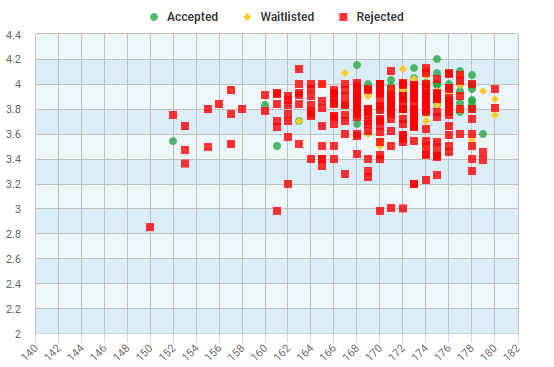Texas A&M University School of Law
General Info

On August 12, 2013, Texas A&M University purchased the ongoing operations of Texas Wesleyan University School of Law. Originally established in 1989 as the Dallas/Fort Worth School of Law, the School of Law became part of Texas Wesleyan University in 1992. Texas A&M University School of Law is ABA accredited and is located in the same location in downtown Fort Worth.
Contact information
- (Website) https://www.law.tamu.edu/
- (Admissions Dean) law-admissions@law.tamu.edu
- (Location) Fort Worth, TX
Texas A&M Admissions
Texas A&M is considered a Moderately Competitive law school, which accepts only 20% of its applicants. Comparatively, Texasam is Higher than the average cost for law school.
| Applications | Offers | Matriculated | |
|---|---|---|---|
| Class of 2029 | 2063 | 406 (19.68%) | 133 (6.4%) |
| 25% | Median | 75% | |
| GPA | 3.13 | 3.38 | 3.56 |
| LSAT | 154 | 156 | 158 |
Tuition And Financial Aid
| In-State Resident | Non-Resident | |
|---|---|---|
| Full Time | $33,092 | $33,092 |
| Part Time | $24,069 | $24,069 |
Living Expenses
- Living on-campus: $24,716
- Living off-campus: $24,716
- Living at home: $24,716
Important Dates
- Early Decision 1: N/A
- Early Decision 2: N/A
- Regular Decision: N/A
- Application Fee: $55
Texas A&M Admissions Predictor Tool
Texas A&M COMPARISON TOOL
Texas A&M


Texas A&M Community
Texas A&M is considered to have a Somewhat Favorable student to faculty ratio. The average class size for 1L sections is approximately Above Average compared to other law schools. Student diversity at Texasam is Below Average.
Student body
Faculty Statistics
- Full Time: 28
- Part Time: 38
Faculty
- # Female Faculty: 32
- # Minority Faculty: 8
Ratio
20.8 Students
1 Faculty
Housing Options
- On Campus Housing: No
- Graduate Housing: No
- Law Specific Housing: No
Texas A&M Curriculum
The size of 1L sections affects the quality and consistency of teaching in law schools. Generally with smaller 1L section sizes, students receive more individualized attention. Texas A&M 1L section size is 6% smaller than law schools in Texas and 6% larger than all PUBLIC law schools.
1L Section Size Comparison
Positions Available in Advanced Courses
- Simulation Courses: 190
- Faculty Supervised Clinics: 195
Students Involved in Advanced Activities
- Field Placements: 99
- Law Journals: 223
- Moot Court/Mock Trials: 0
Attrition Rates
- First Year: 7.9%
- Second Year: 1.0%
- Third Year: 0.0%
- Fourth Year: 0.0%
Texas A&M Employment
Deciding to attend law school requires a large financial investment with the goal of securing employment upon graduation. The Texas A&M class of 2024 had an employment rate of 80% with 1% pursuing an additional degree.
Employment Comparison
In 2024, 93.2%% of students reported their employment status 9-months after graduation.
Type of Employment
- Law Firms: 54.0%
- Business: 33.0%
- Government: 8.0%
- Public Interest: 1.0%
- Academia: 3.0%
- Texas: 96%
- Pennsylvania: 1%
- Kentucky: 1%
Bar Passage Rates
- Reporting: 93.2%
- First Time Takers: 220
- Average School: 76.6%
- Average State: 77.4%
- Pass Difference: -0.8%
Top Bar Jurisdiction
- Texas: 77.4%
- Passed: 157 of 205 (76.6%)
- State Average: 77.4%
- Difference: -0.8%
